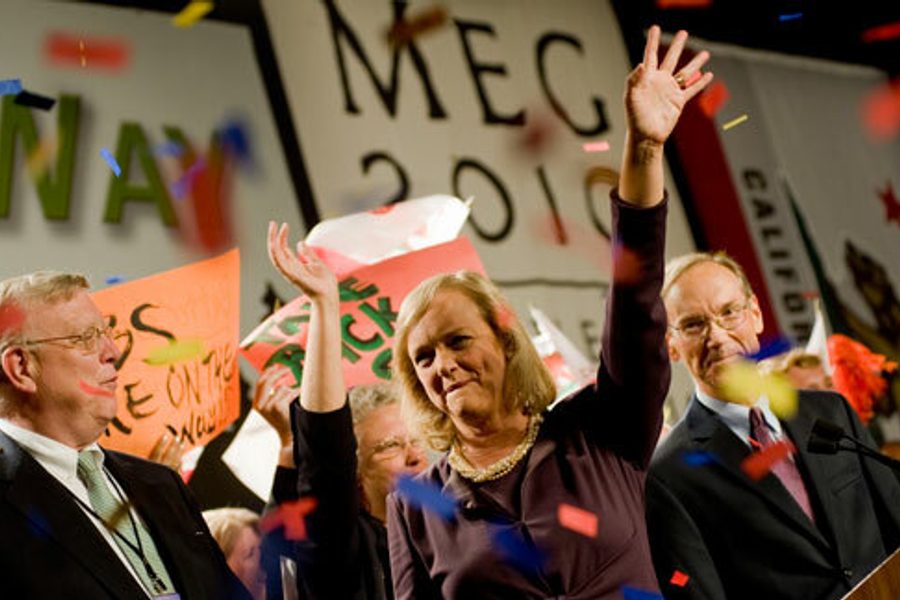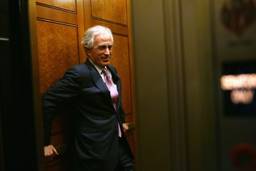Editor’s note: This article has been updated with corrections (see below)
The California Nurses Association (CNA) is known as one of the most progressive unions in the country. It endorsed Ralph Nader in 2000 and campaigned steadily for single-payer healthcare when other unions were advocating for the watered down public option. It created a powerful base in California through democratic rank-and-file trade unionism and refused to give into concessionary deals when other nurses unions in California were.
And the CNA hasn’t shied away from the state’s November gubernatorial election, spending about $300,000 since last year to oppose GOP California Gubentorial Candidate Meg Whitman and support Democratic candidate Jerry Brown, the AP reports.
So perhaps we shouldn’t surprised that Whitman has now put the CNA on the defensive for alleged nepotism and excessive union salaries. Last week, Whitman sent out a four-page flyer to all of California’s nearly 300,000 nurses blasting CNA/National Nurses Organizing Committee Executive Director Rose Ann DeMoro for earning more than $293,000 per year, nearly five times more than the median salary of a nurse in the United States. And DeMoro’s husband Robert, who heads the union’s research arm, is paid nearly $142,254 each year. (You can find all these details at the Whitman campaign’s “Truth for Nurses” website.)
The flyer points to state records showing that there are 99 staffers at the CNA who make more than $100,000 a year, while the average salary of nurses in the United States is only $62,400. (The average Cailfornia RN salary in 2009 was $85,080, according to the Labor Department.)
Responding in the LA Times, DeMoro said: “It’s again this corporate boss telling the nurses how much they should pay their executive director. She thinks that she should be able to tell nurses what they should pay their staff.”
Regardless of why CNA’s 86,000 members decided to pay their leaders high salaries, by doing so they open themselves up to right-wing attacks.
As I’ve written on this blog before, if labor leaders in all U.S. unions capped their salaries at $150,000 a year, the country’s labor movement could save $143 million a year. Usually when I mention this I am attacked in private by some labor activists, who say I am reinforcing right-wing talking points about unions. But the Whitman-CNA controversy shows that if labor doesn’t address these issues internally, then even a progressive militant union like CNA can be attacked by right-wing forces for being out of touch with its members.
Bloated union salaries epitomize the stereotype of union officials doing little to help the workers they represent. Of course, CNA is growing and calling strikes to defend its members’ interests. But it’s also true that when union leaders make such high salaries, they lead lives drastically different than their members. It’s important that labor leaders make something close to the members they represent so they understand what it is to have angst over paying the mortgage and paying bills.
My father has been a union organizer for 33 years with United Electrical, Radio, and Machine Workers of America (UE), which caps its union official’s salaries at $56,000 a year. I grew up in a modest house in a good neighborhood, went to public school, and struggled to pay for college, like a lot of kids.
Growing up this way gave me a working-class sensibility too often lacking in intellectual debates over policy changes in Washington, D.C. When I advocate for changes to labor law, I’m not advocating for an idea because I think it’s intellectually the right thing to do. I’m literally advocating for my own family.
The point here is that closing the pay gap between union officials and rank-and-file members isn’t just about protecting labor from attacks from the likes of Meg Whitman. The real problem with paying leaders salaries five to six times more than members is that doing so puts union leaders in a different social class, where it’s easy to feel out of touch with members’ needs.
As veteran UE organizer Mel Womack used to say when defending the union’s pay practices, which are unusual in the labor movement, “a fat dog simply can’t hunt.”
CORRECTIONS: The original version of this post stated that CNA has 125,000 members. In fact, the CNA/NNOC has 86,000 members, and National Nurses United, of which CNA/NNOC is a founding member, has 155,000 members. The piece also stated that Rose Ann DeMoro is the president of CNA/NNOC. In fact, she is the executive director of the organization.









